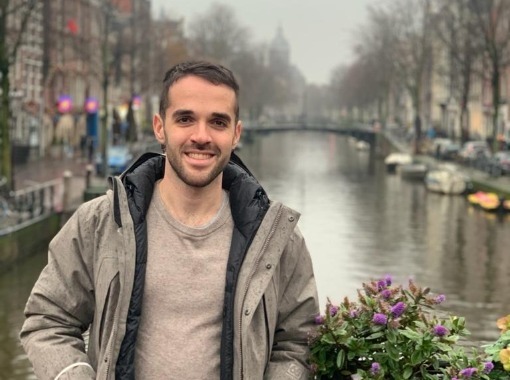Doctoral defence in Geology - Alberto Caracciolo

Aðalbygging
The Aula
The defence will be streamed live
Ph.D. student: Alberto Caracciolo
Dissertation title: Temporal evolution of crystal mush reservoirs beneath the Bárðarbunga-Veiðivötn volcanic system, Iceland
Opponents: Dr. Chiara Maria Petrone, Research leader, Natural History Museum, UK
Dr. Maxim Portnyagin, Senior Scientist, GEOMAR Helmholtz Centre for Ocean Research Kiel, Germany
Advisor: Dr. Enikő Bali, Associate Professor, Institute of Earth Sciences, University of Iceland
Doctoral committee:
Dr. Maren Kahl, Postdoctoral researcher, Institute of Earth Sciences, University of Heidelberg, Germany
Dr. Guðmundur H. Guðfinnsson, Research Scientist, Institute of Earth Sciences, University of Iceland
Dr. Margaret E. Hartley, Senior Lecturer, University of Manchester, UK
Chair of Ceremony: Dr. Freysteinn Sigmundsson, Research Scientist at the Institute of Earth Sciences and the Head of the Faculty of Earth Sciences, University of Iceland
Abstract:
The physico-chemical properties of magma storage reservoirs in multi-level magmatic systems may change with time, along with the timescales at which crystals and melts are processed throughout the crust.
In this thesis, I use an integrated approach of quantitative petrological and geochemical analysis combined with diffusion chronometry to evaluate temporal variations of magma storage and transfer conditions through crystal mush reservoirs beneath the Bárðarbunga-Veiðivötn volcanic system in Central Iceland. To do this, I targeted five eruptive units of different age, namely Ljósufjöll (subglacial), Brandur, Fontur and Saxi (early-Holocene), Þjórsárdalshraun and Drekahraun (middle-Holocene) and Veiðivötn 1477 AD (historical).
The composition of macrocrysts indicates that they are not in chemical equilibrium with the liquid that carried them to the surface. Plagioclase, olivine and clinopyroxene core compositions are too primitive to be in equilibrium with the carrier liquid, which indicates that storage and disaggregation of crystal mushes played an important role in these eruptions. Macrocryst compositions vary with time, with subglacial and early-Holocene magmatic units being characterized by more primitive and less variegate compositions (An85-92, Fo81-87) compared to middle-Holocene and historical units (An80-92, Fo77-87). Application of different geobarometers suggests that, regardless of time, underneath the Bárðarbunga-Veiðivötn system there is a multi-tiered, compositionally layered plumbing system in which crystals and melts are gradually transferred to shallower levels. In particular, I argue for a temporally invariant reservoir(s) in the middle crust, at about 6.8-7.8 ± 2.5 km, in which melts last equilibrate with the crystal cargo prior to eruptions. The largest contribution from deep-seated, lower crustal reservoir(s) occurs during subglacial and early-Holocene times. Trace elements and oxygen isotopes (δ18O) are consistent with the supply of primary mixtures of melts that contain depleted and enriched mantle signatures. As primary mixtures migrate towards upper crustal levels, they become more evolved and their δ18O values become lower as a result of crustal contamination processes. Fe-Mg diffusion chronometry shows that macrocrysts were mobilized and entrained into the final carrier liquid over timescales of 5-12 months in the early-Holocene, whereas middle-Holocene and historical macrocrysts were disaggregated within timescales of about 2 months. The presence of crystalline gabbroic nodules in the early-Holocene samples, and their larger crystal content relative to recent samples, likely indicates that during the early-Holocene the mush required more time to be loosened, mobilised and converted into an eruptible magma. These temporal changes may be attributed to an increase in magma production rates in the early-Holocene associated with glacio-isostasy effects.
About the doctoral candidate:
Alberto Caracciolo was born in Italy in 1992. In 2014 Alberto obtained his BSc in geology at the University of Urbino, Italy. He obtained his master in petrology and volcanology at the University of Pisa, Italy, in 2016. Following an Erasmus traineeship at the University of Bristol, he began his doctoral studies at the University of Iceland in September 2017.
Alberto Caracciolo



